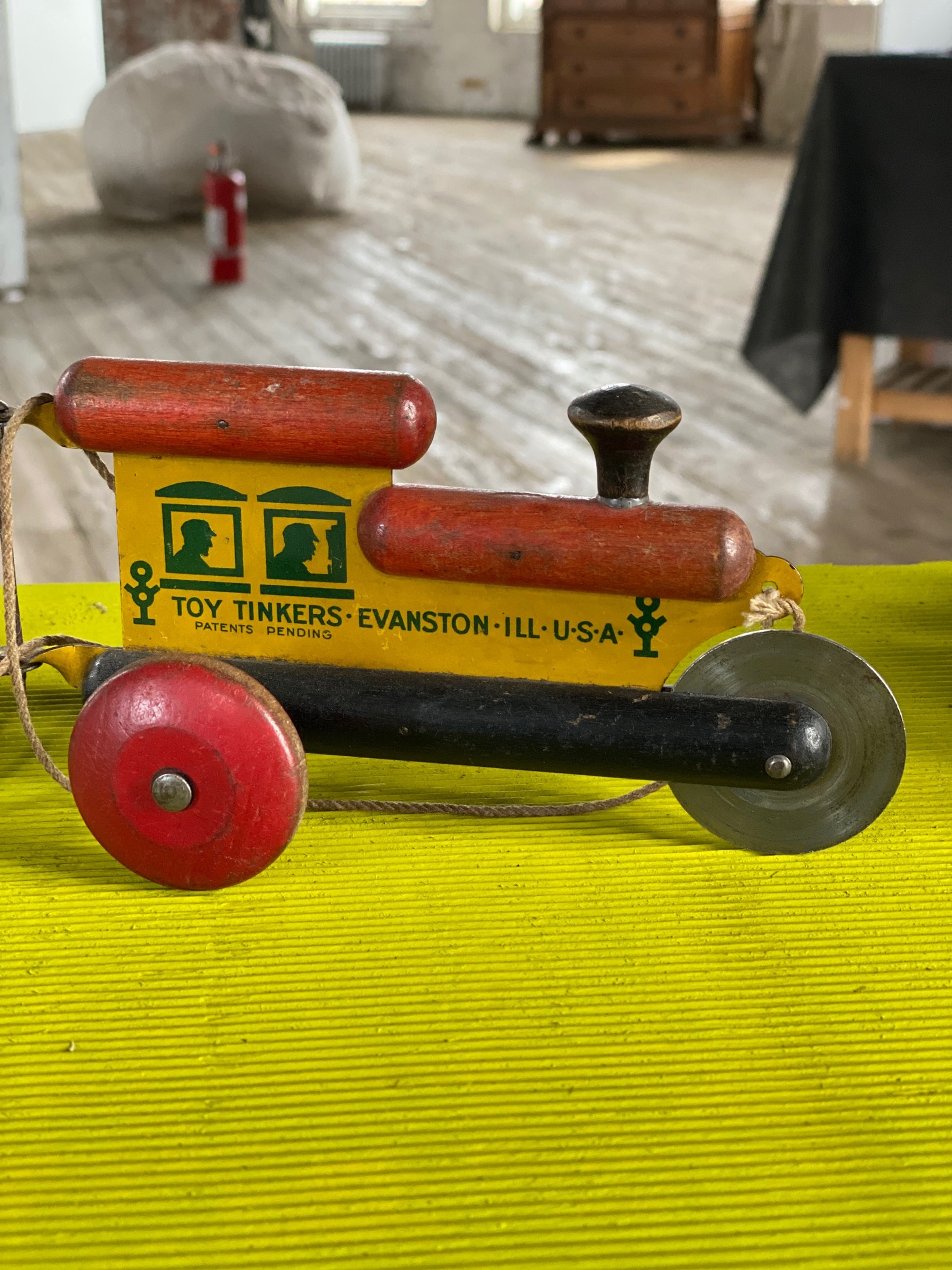The World of Three-Wheelers… A Cultural Journey
March 6- April 24, 2022
The largest museum of three-wheelers is a cultural survey of our times. Artist, Stefan Saffer conducted an investigation of the parallel worlds in our society where we create visions of what we need and what we want. The three-wheeler installation represents the expansive exposure of prefabricated imaginative hero characters, magic power tools and unlimited opportunities. The array of toy vehicles/toys/robots – produced with technical perfection –all have one common denominator, all on three wheels.
In a long traffic jam like setting, are examples of mass-produced childhood phantasies from the 1900s to today. The line of objects represents a semiotic chain of significant worlds of imagery from past to current generations. Small perfect objects – shiny, multifunctional, often incredibly detailed – tell us stories of war, space explorations, rescue missions, speed racings, magic worlds, superpowers, ideal worlds, bionic creatures and many more visions in a very seductive manner. Our own imagination is secondary due to the suggestive nature of each object.
But why now three-wheelers? The first car built was a three-wheeler to embark on a revolutionary journey, overcoming physical boundaries, travelling far distances the machines created the “industrial revolution”. Covid today ramped up a new revolution of living and working in a virtual world. Three-wheelers were once produced as poor peoples vehicles, especially after the WWII when resources were scarce and mobility luxurious. Afterward three-wheelers were used for representing the future of mobility, ie; Buckminster Fuller’s “Dymaxion Car” or many early solar cell cars. Today three-wheelers are on the market as “fun” cars. The category of three-wheelers portrays a story of hope and failure, of future and past, and Saffer believes even today many people do not trust three-wheeled vehicle like they trust four-wheels.
“The Museum of Three Wheelers” is an attempt to present a diverse reflection on our western society and its projected cultural visions. Who are we, what world do we choose? In a time of plenty, what seduces us and how do these relate to our here and now ? There is no hierarchy in the display, no categories, no groupings or logical way to create an order. Create your own playfully order and find your own path in the road to somewhere.

















